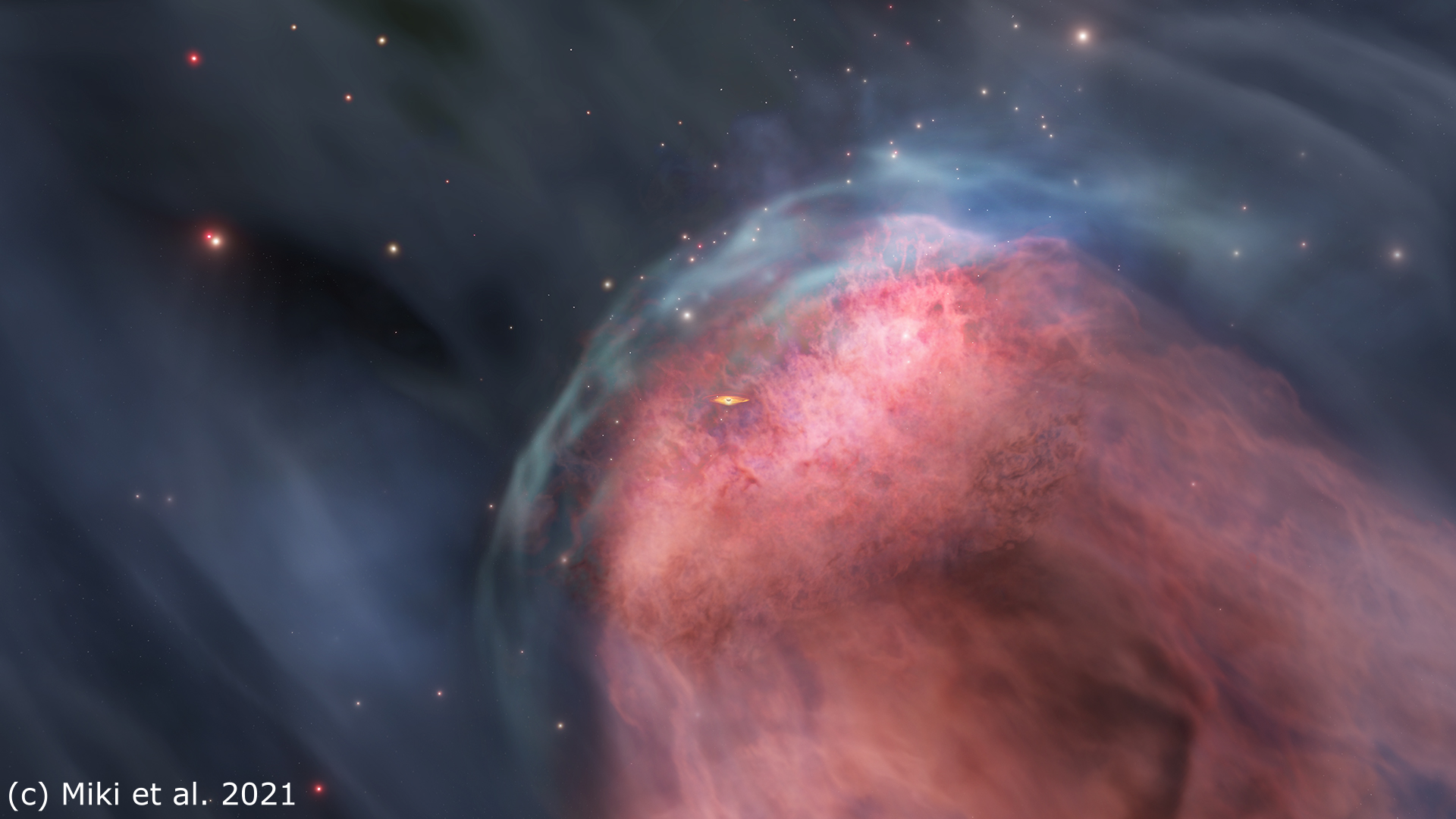26.01.2021

Galaxies collide. Visualizations of the dynamic model simulating two different scenarios. The top row shows a collision reducing core activity, the bottom row shows a collision increasing it. © 2021 Miki et al.
It was previously thought that collisions between galaxies would necessarily add to the activity of the massive black holes at their centers. However, researchers have performed the most accurate simulations of a range of collision scenarios and have found that some collisions can reduce the activity of their central black holes. The reason is that certain head-on collisions may in fact clear the galactic nuclei of the matter which would otherwise fuel the black holes contained within.
When you think about gargantuan phenomena such as the collision of galaxies, it might be tempting to imagine it as some sort of cosmic cataclysm, with stars crashing and exploding, and destruction on an epic scale. But actually it is closer to a pair of clouds combining, usually a larger one absorbing a smaller one. It’s unlikely any stars within them would collide themselves. But that said, when galaxies collide, the consequences can be enormous.
Galaxies collide in different ways. Sometimes a small galaxy will collide with the outer part of a larger one and either pass through or merge, in either case exchanging a lot of stars along the way. But galaxies can also collide head-on, where the smaller of the two will be torn apart by overpowering tidal forces of the larger one. It’s in this scenario that something very interesting can happen within the galactic nucleus.
“At the heart of most galaxies lies a massive black hole, or MBH,” said Research Associate Yohei Miki from the University of Tokyo. “For as long as astronomers have explored galactic collisions, it has been assumed that a collision would always provide fuel for an MBH in the form of matter within the nucleus. And that this fuel would feed the MBH, significantly increasing its activity, which we would see as ultraviolet and X-ray light amongst other things. However, we now have good reason to believe that this sequence of events is not inevitable and that in fact the exact opposite might sometimes be true.”

Cosmic scales. Artist's impression of gas being pulled away from a galactic nucleus. © 2021 Miki et al.
It seems logical that a galactic collision would only increase the activity of an MBH, but Miki and his team were curious to test this notion. They constructed highly detailed models of galactic collision scenarios and ran them on supercomputers. The team was pleased to see that in some circumstances, an incoming small galaxy might actually strip away the matter surrounding the MBH of the larger one. This would reduce instead of increase its activity.
“We computed the dynamic evolution of the gaseous matter which surrounds the MBH in a torus, or donut, shape,” said Miki. “If the incoming galaxy accelerated this torus above a certain threshold determined by properties of the MBH, then the matter would be ejected and the MBH would be starved. These events can last in the region of a million years, though we are still unsure about how long the suppression of MBH activity may last.”
This research could help us understand the evolution of our own Milky Way. Astronomers are confident our galaxy has collided with many smaller ones before.
Quelle: The University of Tokyo
